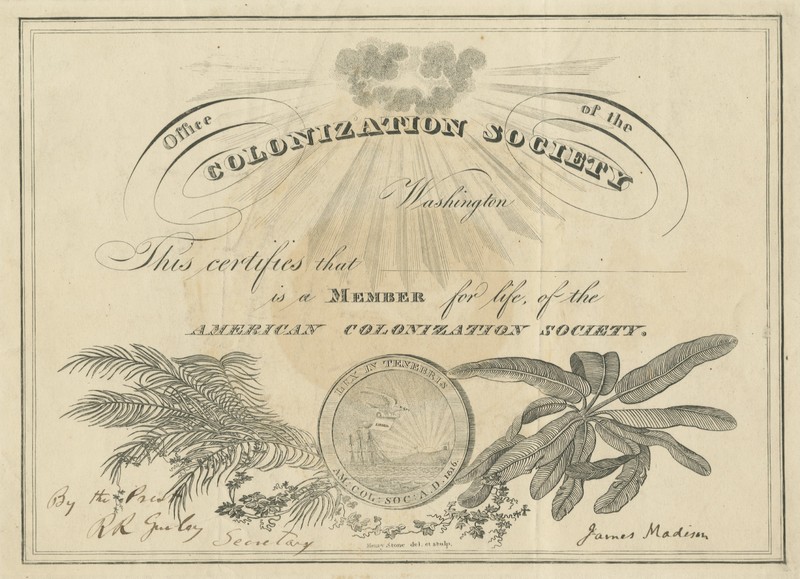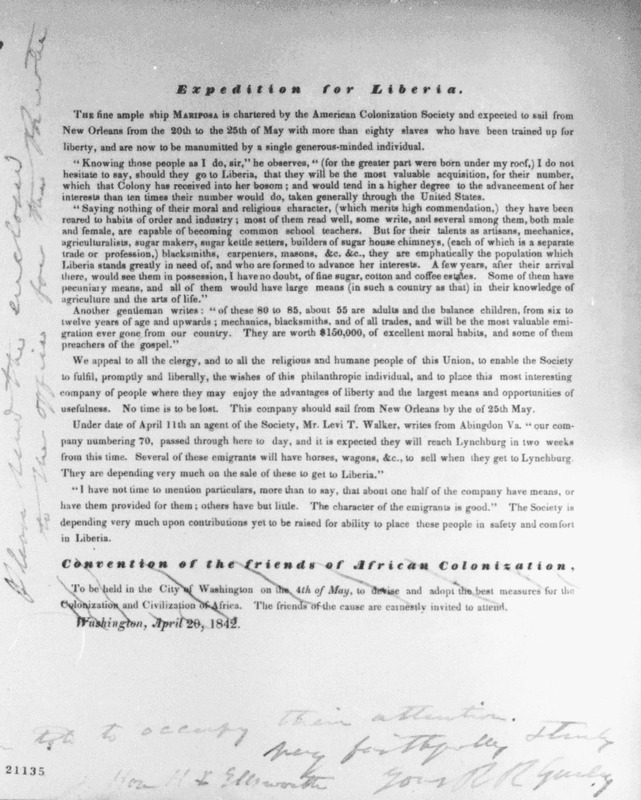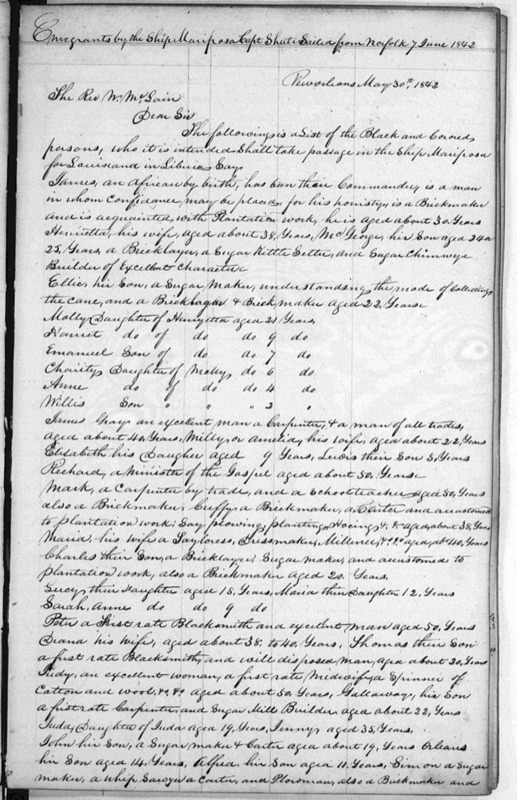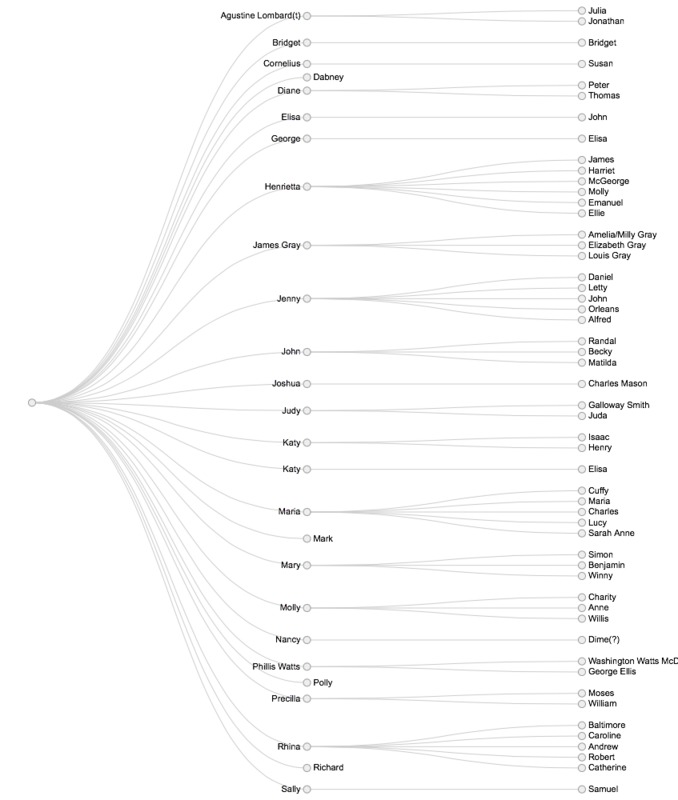Washington's Voyage to Liberia
Role of the American Colonization Society in Liberian Settlement
The American Colonization Society (ACS) was established in 1816 by the Presbyterian Reverend Robert Finley, as an initiative to help free Black people in the United States emigrate to the newly claimed colony of Liberia on Africa’s Western coast (WGBH, 1998,1999). The English had demonstrated (through the establishment of Sierra Leone) that a settlement could be established on the Western coast fairly unopposed. In Sierra Leone, English squadrons seized illegal slave ships on Africa’s west coast and relocated them to settlements in Freetown as independents.
Reverend Finley believed that Black people and white people would never be able to peacefully coexist in America in the long term. Although a seemingly polarizing stance, both Black and white churchmen voiced their eagerness to aid this cause, and it was presented as one of the viable solutions to the ever-growing social problems fermenting in early America due to the presence of the growing free Black population (WGBH, 1998,1999). What were these social issues that on one hand supported the deportation of freed Black people, but on the other hand overlooked the presence of the slaves facilitating the construction of the evolving, modern America?
The free Black population was ultimately viewed as a hindrance or crutch to not only the growth of America, but also to the business of slavery. Free Black people formed communities that often provided support or service to slaves, newly freed slaves, and Maroons. As these communities grew in size and shape, so did the range of their communications. Planters and slavery supporters alike became aware of the growing free Black population, and several looked to the ACS as a potential solution. The attempted, yet foiled, large-scale revolt led by Denmark Veasey in 1822 only furthered the enthusiasm already budding around the ACS. In a knee-jerk reaction, state legislators immediately implemented a series of aggressively repressive state legislations, which included rulings that contributed to the furthering of Black oppression. This included laws that forbade Black people from congregating and receiving an education. Prejudiced employment tactics kept many Black people out of the workforce, while prejudiced social codes limited their support systems.
This social climate made it easier to understand why the goals of the ACS found support in both Black and white communities looking for a peaceful solution to the lasting and damaging effects of slavery. Yet the ACS struggled with funding, which curtailed its attempts to send a large population to Liberia (Wilson, 1971). Although there was a desire to remove free Black people, individuals were not willing to fund the process as had been assumed. Program support dropped steadily, and shortly before the conclusion of the American Civil War in 1865, the American Colonization Society formally dissolved in 1864.
Mariposa Passenger List, Transcriptions and Family Ties
Washington Watts McDonogh was not the only ex-slave of John McDonogh to make the voyage to Liberia. In addition to Washington, there were approximately another 80 freed McDonogh slaves bound for the newly established territory. Below you will find the original documents pertaining to this momentous eastward migration. For this group of ex-slaves, emigration offered itself as the only solution for their then current predicament. Although these ex-slaves helped construct the country that they were now forced to leave, some individuals did not feel as if America would ever be a place for them to grow and establish honorable legacies. The deal extended by John McDonogh, their former master, stipulated that freedom was permanently attached to a clause of deportation to Liberia. He presented no ulterior scenario where his slaves could earn their freedom and remain in America. John McDonogh decided to sponsor the entire trip to Liberia for his slaves through the American Colonization Society in order to guarantee their deportation. Below are the major documents pertaining to this transaction.
The first item, reading left to right, is a descriptive piece about the Mariposa trip. Moving on from that, the two central images are two parts of one whole message signed off on by John McDonogh. This document lists the McDonogh slaves that departed for Liberia, including a brief description of each individual. Lastly, there is a family tree compiled based on the preceding document(s) (list) produced by John McDonogh. Please consider that there may be misrepresentations due to a lack of certainty in terms of the genuine nature of their relations, whether it be a brother, sister, or mother that are not of actual biological relation. Click on the images to view the transcriptions.





